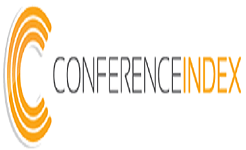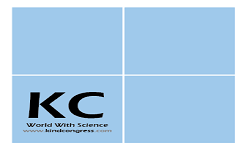Event Date
March 24-25, 2026
Venue
London, UK
– Previous Conference Performers / Professionals From Around The Globe –
Media Partners/Collaborator
A huge thanks to all our amazing partners. We couldn’t have a conference without you!










Sponsors/Exhibitors
A huge thanks to all our amazing partners. We couldn’t have a conference without you!


About Conference
The 7th Edition of the International Conference and Expo on Material Science and Nanotechnology will take place in London, UK, on March 24-25, 2026. This premier event brings together leading researchers, scientists, engineers, and industry professionals from around the globe to discuss the latest innovations, research findings, and advancements in the field of material science and nanotechnology.
The conference serves as a global platform for sharing knowledge, exchanging ideas, and fostering collaborations that can drive scientific breakthroughs and industrial applications in advanced materials, nanomaterials, biomaterials, energy materials, and beyond.
Conference Theme: “Innovations in Materials and Nanotechnology: Pioneering the Future of Science and Engineering”
Conference Objectives
- To explore the current trends and future directions in material science and nanotechnology.
- To foster interdisciplinary collaborations among researchers, industry experts, and academia.
- To present cutting-edge research and technological advancements in materials development and nanotech applications.
- To provide a platform for young researchers and students to interact with world-renowned scientists.
- To promote global partnerships and technology transfer in the field.
Conference Benefits
- Networking Opportunities: Connect with top researchers, innovators, and decision-makers from academia and industry.
- Keynote Sessions: Hear from world-renowned scientists and leaders in material science and nanotechnology.
- Workshops & Technical Sessions: Gain insights through in-depth technical presentations and hands-on workshops.
- Poster Presentations & Exhibitions: Showcase your research and explore new products and technologies.
- Collaboration & Funding: Explore potential research collaborations and funding opportunities.
- Publication Opportunities: Selected abstracts and papers may be published in reputed journals or conference proceedings.
Who Should Attend?
- Material Scientists and Nanotechnologists
- Researchers and Academics
- Engineers and Technologists
- Physicists and Chemists
- Biomedical Researchers
- Industrial Experts and R\&D Professionals
- Students and Early Career Researchers
- Policy Makers and Innovators
- Startups and Entrepreneurs in Advanced Materials and Nanotech
Sessions and Tracks
- Advanced Materials and Functional Materials
- Nanomaterials and Nanostructures
- Materials for Energy Storage and Conversion
- Biomaterials and Biomedical Applications
- Computational Materials Science
- Materials Characterization and Testing
- Polymers and Soft Materials
- Nanotechnology in Electronics and Photonics
- Smart Textiles and Wearable Materials
- 2D Materials and Graphene
- Magnetic and Optical Materials
- Surface Engineering and Coatings
- Composite and Hybrid Materials
- Ceramics and Glasses
- Environmental and Green Materials
- Quantum Materials
- Materials for Aerospace and Automotive
- Industrial Applications of Nanotechnology
- Crystallography and Defect Engineering
- Metallurgy and Alloy Development
- Additive Manufacturing and 3D Printing of Materials
- Materials for Civil and Structural Engineering
- Textile Materials and Fibers
- Energy Harvesting Materials
- Ethics, Regulation, and Commercialization of Nanotechnology
Market analysis
Global Outlook on Material Science and Nanotechnology
The global material science and nanotechnology market is undergoing a transformative evolution, driven by rapid technological advancements, increasing R\&D investments, and the growing demand for innovative, high-performance materials across a variety of sectors including electronics, healthcare, energy, aerospace, automotive, and construction.
Market Size & Growth
The global material science market was valued at approximately USD 1.35 trillion in 2024 and is projected to reach USD 1.89 trillion by 2030 , growing at a CAGR of 5.7% .
The nanotechnology market was valued at USD 80 billion in 2024 , and is expected to grow to over USD 160 billion by 2030 , registering a CAGR of 12%+ during the forecast period.
Key Market Drivers
Demand for Smart and Functional Materials: Growing use in electronics, healthcare, and military applications.
Expansion of Renewable Energy Technologies: High-performance materials needed for solar cells, batteries, and fuel cells.
Miniaturization of Devices: Nanomaterials are crucial in producing lighter, stronger, and more efficient components.
Medical Applications: Surge in demand for biomaterials in implants, drug delivery systems, and regenerative medicine.
Sustainable Solutions: Rising focus on recyclable and eco-friendly materials in response to global environmental concerns.
About Venue
A Global Hub of Innovation, History, and Culture
London, the capital of the United Kingdom, is one of the most iconic cities in the world — a vibrant and cosmopolitan metropolis where tradition meets cutting-edge innovation. Known for its rich history, world-class education, cultural diversity, and influential global presence, London offers an inspiring setting for international conferences and academic exchange.
A Center of Scientific Excellence
London is home to some of the world’s most prestigious academic institutions and research centers, including Imperial College London , University College London (UCL) , and King’s College London , making it a key global player in scientific research and technological development. The city’s strong emphasis on innovation, science, and education creates the ideal environment for fostering breakthroughs in material science and nanotechnology.
Cultural and Historical Riches
Visitors to London can explore a stunning array of historical landmarks and cultural attractions, including:
- The British Museum
- The Houses of Parliament & Big Ben
- The Tower of London
- Buckingham Palace
- The London Eye
- Westminster Abbey
– Tracks & Key Topics –
- Smart Materials
- Functional Materials
- Nanomaterials
- Nanocomposites
- Nanostructured Materials
- Carbon Nanotubes
- Graphene and 2D Materials
- Quantum Dots
- Nanowires and Nanorods
- Metal-Organic Frameworks (MOFs)
- Materials for Batteries
- Supercapacitors
- Hydrogen Storage Materials
- Thermoelectric Materials
- Photovoltaic Materials
- Fuel Cell Materials
- Perovskite Solar Cells
- Phase Change Materials for Energy
- Energy Harvesting Nanomaterials
- Green Energy Materials
- Biodegradable Materials
- Tissue Engineering Scaffolds
- Drug Delivery Systems
- Bioactive Glass
- Dental Materials
- Medical Implants
- Biosensors
- Wound Healing Materials
- Antimicrobial Nanomaterials
- Smart Hydrogels
- Sol-Gel Processing
- Self-Assembly of Nanomaterials
- Chemical Vapor Deposition (CVD)
- Physical Vapor Deposition (PVD)
- Electrospinning
- Atomic Layer Deposition
- 3D and 4D Printing
- Additive Manufacturing
- Sputtering Techniques
- Laser-Assisted Fabrication
- Scanning Electron Microscopy (SEM)
- Transmission Electron Microscopy (TEM)
- Atomic Force Microscopy (AFM)
- X-ray Diffraction (XRD)
- Raman Spectroscopy
- FTIR and UV-Vis Spectroscopy
- Thermal Analysis Techniques
- Surface Characterization
- Nanoindentation
- Magnetic Property Characterization
- Materials Modelling and Simulation
- Density Functional Theory (DFT)
- Molecular Dynamics
- Machine Learning in Materials Discovery
- AI-Driven Materials Optimization
- Data-Driven Materials Design
- Multiscale Modelling
- Quantum Simulations
- Computational Thermodynamics
- Materials Informatics
- Lightweight Alloys
- High-Entropy Alloys
- Shape Memory Alloys
- Superalloys for Aerospace
- Corrosion-Resistant Metals
- Advanced Ceramics
- Transparent Ceramics
- Thermal Barrier Coatings
- Refractory Materials
- Electroceramics
- Conductive Polymers
- Biopolymers
- Polymer Nanocomposites
- Liquid Crystals
- Elastomers
- Smart Polymers
- Self-Healing Polymers
- Thermoplastic Composites
- Polymer Gels
- Responsive Materials
- Aerospace Materials
- Automotive Materials
- Materials in Construction
- Materials for Electronics
- MEMS and NEMS Devices
- Optical Materials and Photonics
- Coatings and Thin Films
- Wearable and Textile Materials
- Packaging Materials
- Green and Sustainable Materials
- Circular Economy in Materials Science
- Recycling of Nanomaterials
- Eco-friendly Polymers
- Regulatory Frameworks for Nanotechnology
- Ethical Implications of Nanoscience
- Toxicity and Risk Assessment
- Environmental Impact of Materials
- Commercialization and IP in Nanotechnology
- International Collaboration in Materials Research
- Smart Materials
- Functional Materials
- Nanomaterials
- Nanocomposites
- Nanostructured Materials
- Carbon Nanotubes
- Graphene and 2D Materials
- Quantum Dots
- Nanowires and Nanorods
- Metal-Organic Frameworks (MOFs)
- Materials for Batteries
- Supercapacitors
- Hydrogen Storage Materials
- Thermoelectric Materials
- Photovoltaic Materials
- Fuel Cell Materials
- Perovskite Solar Cells
- Phase Change Materials for Energy
- Energy Harvesting Nanomaterials
- Green Energy Materials
- Biodegradable Materials
- Tissue Engineering Scaffolds
- Drug Delivery Systems
- Bioactive Glass
- Dental Materials
- Medical Implants
- Biosensors
- Wound Healing Materials
- Antimicrobial Nanomaterials
- Smart Hydrogels
- Sol-Gel Processing
- Self-Assembly of Nanomaterials
- Chemical Vapor Deposition (CVD)
- Physical Vapor Deposition (PVD)
- Electrospinning
- Atomic Layer Deposition
- 3D and 4D Printing
- Additive Manufacturing
- Sputtering Techniques
- Laser-Assisted Fabrication
- Scanning Electron Microscopy (SEM)
- Transmission Electron Microscopy (TEM)
- Atomic Force Microscopy (AFM)
- X-ray Diffraction (XRD)
- Raman Spectroscopy
- FTIR and UV-Vis Spectroscopy
- Thermal Analysis Techniques
- Surface Characterization
- Nanoindentation
- Magnetic Property Characterization
- Materials Modelling and Simulation
- Density Functional Theory (DFT)
- Molecular Dynamics
- Machine Learning in Materials Discovery
- AI-Driven Materials Optimization
- Data-Driven Materials Design
- Multiscale Modelling
- Quantum Simulations
- Computational Thermodynamics
- Materials Informatics
- Lightweight Alloys
- High-Entropy Alloys
- Shape Memory Alloys
- Superalloys for Aerospace
- Corrosion-Resistant Metals
- Advanced Ceramics
- Transparent Ceramics
- Thermal Barrier Coatings
- Refractory Materials
- Electroceramics
- Conductive Polymers
- Biopolymers
- Polymer Nanocomposites
- Liquid Crystals
- Elastomers
- Smart Polymers
- Self-Healing Polymers
- Thermoplastic Composites
- Polymer Gels
- Responsive Materials
- Aerospace Materials
- Automotive Materials
- Materials in Construction
- Materials for Electronics
- MEMS and NEMS Devices
- Optical Materials and Photonics
- Coatings and Thin Films
- Wearable and Textile Materials
- Packaging Materials
- Green and Sustainable Materials
- Circular Economy in Materials Science
- Recycling of Nanomaterials
- Eco-friendly Polymers
- Regulatory Frameworks for Nanotechnology
- Ethical Implications of Nanoscience
- Toxicity and Risk Assessment
- Environmental Impact of Materials
- Commercialization and IP in Nanotechnology
- International Collaboration in Materials Research










































